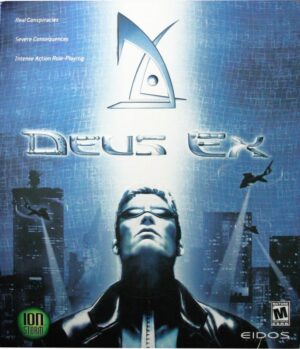Retro Replay Review
Gameplay
Soul Cradle: Sekai o Kurau Mono strikes a balance between classic tactical-RPG elements and fresh mechanics that keep battles engaging throughout. Players command a diverse roster of characters on grid-based maps, leveraging unique skills, elemental affinities, and terrain advantages. Combat depth emerges from chaining combo attacks and strategically positioning units to break enemy defenses, encouraging careful planning rather than button‐mashing.
The limited-edition package doesn’t alter the core gameplay, but having access to the Soul Cradle: The Master Guide art book provides invaluable insights into character abilities and synergy tips. Flipping through full‐color illustrations and developer notes gives enthusiasts a deeper understanding of skill trees and customization paths—perfect for mastering challenging late‐game encounters. Detailed enumerations in the guide clarify obscure status effects and unlock conditions, smoothing the learning curve for newcomers to the genre.
Exploration in Soul Cradle feels rewarding, thanks to hidden side-quests, optional bosses, and environment puzzles that reward thorough searchers with rare items. The menu-driven interface remains intuitive, albeit entirely in Japanese, so non-Japanese readers may need to reference online guides or community translations when deciphering quest text. Nevertheless, the robust battle system and strategic layer shine through regardless of language barriers, making each skirmish feel purposeful and satisfying.
Graphics
The art direction in Soul Cradle features vibrant, hand-drawn character portraits that pop against stylized, isometric battlefields. Sprites move fluidly, and attack animations—particularly flashy “Soul Burst” finishing moves—feel impactful. During cutscenes, detailed CG stills from the Soul Cradle: The Master Guide showcase character designs with lush color palettes and intricate armor patterns, underscoring the care put into the visual presentation.
Terrain tiles range from verdant forests to sinister ruins, each rendered with atmospheric lighting and particle effects that enhance immersion. Weather changes, such as drifting snow or swirling sandstorms, not only look impressive but also impact battlefield conditions, adding a dynamic visual layer to each skirmish. Even on a standard-definition display, textures retain clarity, and the art style stays consistent, helping players track units and environmental hazards with ease.
Menus and UI elements adhere to an elegant design philosophy—crisp iconography, seamless transitions, and tasteful color coding. While all text appears in Japanese, button prompts and skill icons are clearly depicted, allowing heuristics to replace full translation when navigating menus. Fans of anime‐inspired aesthetics will appreciate the cohesive presentation, from character sprites to environmental backdrops.
Story
Set in a world teetering on the brink of annihilation, Soul Cradle: Sekai o Kurau Mono weaves a narrative about gods who consume their own creations. Players assume the role of a reluctant hero caught between deities vying for ultimate power. The plot unfolds through a combination of in-engine dialogues and lavishly illustrated story panels, some of which are reproduced in the Master Guide art book for fans who want to revisit pivotal moments in high-definition.
Character development is a highlight, with each party member bearing a tragic past that ties directly into the central theme of creation and destruction. Side stories—unlocked via optional chapters—flesh out supporting cast backgrounds, revealing moral ambiguities that challenge players’ allegiances. Even though all dialogue remains in Japanese, strong visual cues, emotive portrait work, and musical leitmotifs by Tenpei Sato convey emotional beats effectively.
Plot pacing feels deliberate, allowing breathing room for exploration and character bonding before diving into high-stakes confrontations. The limited-edition soundtrack booklet accompanying the two-disc soundtrack provides track lists and composer commentary, enriching the storytelling experience by explaining how specific melodies underscore moments of tension, triumph, and sorrow throughout the campaign.
Overall Experience
For collectors and series veterans, the Japanese-only limited edition of Soul Cradle is a treasure trove. Beyond the full game, the Soul Cradle: The Master Guide art book is a luxurious hardcover filled with concept art, staff interviews, and behind-the-scenes anecdotes. This guide not only supplements gameplay but also doubles as a coffee-table keepsake for admirers of the franchise’s visual lore.
The included two-disc soundtrack by Tenpei Sato stands as a high point for audiophiles. Disc one features atmospheric battle and exploration themes, while disc two delves into orchestral and vocal compositions used during pivotal story moments. Robust liner notes—written in Japanese—detail recording sessions and thematic intentions, adding context that deepens appreciation for the score’s emotional resonance.
Potential buyers should note the language barrier: all menus, text, and supplemental materials are in Japanese. However, the intuitive UI design, extensive art book references, and online community translations mitigate this challenge. Overall, Soul Cradle: Sekai o Kurau Mono (Limited Edition) offers a comprehensive package that excels in gameplay depth, striking visuals, rich narrative, and premium collectibles—making it a compelling acquisition for fans of strategy RPGs and Japanese game preservationists alike.
 Retro Replay Retro Replay gaming reviews, news, emulation, geek stuff and more!
Retro Replay Retro Replay gaming reviews, news, emulation, geek stuff and more!



Reviews
There are no reviews yet.